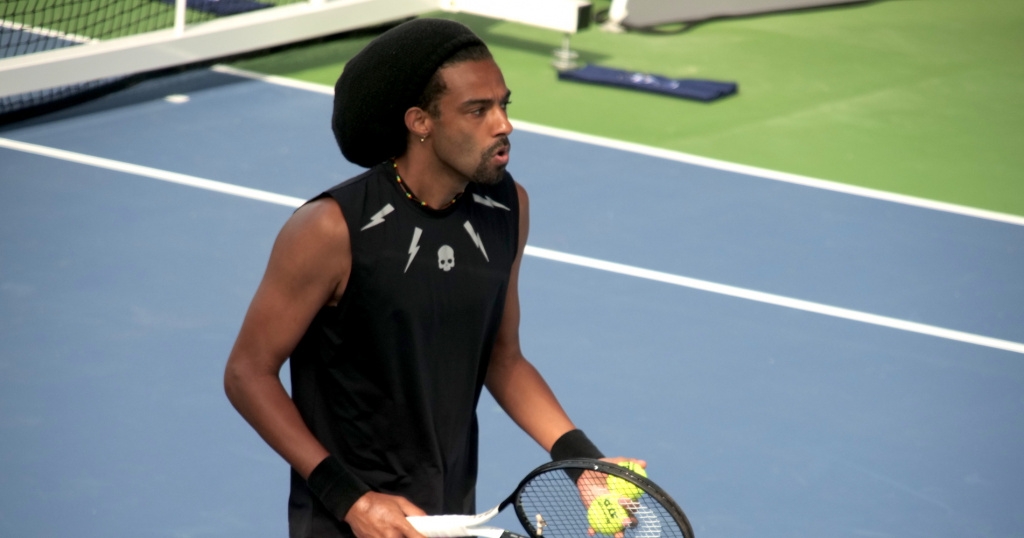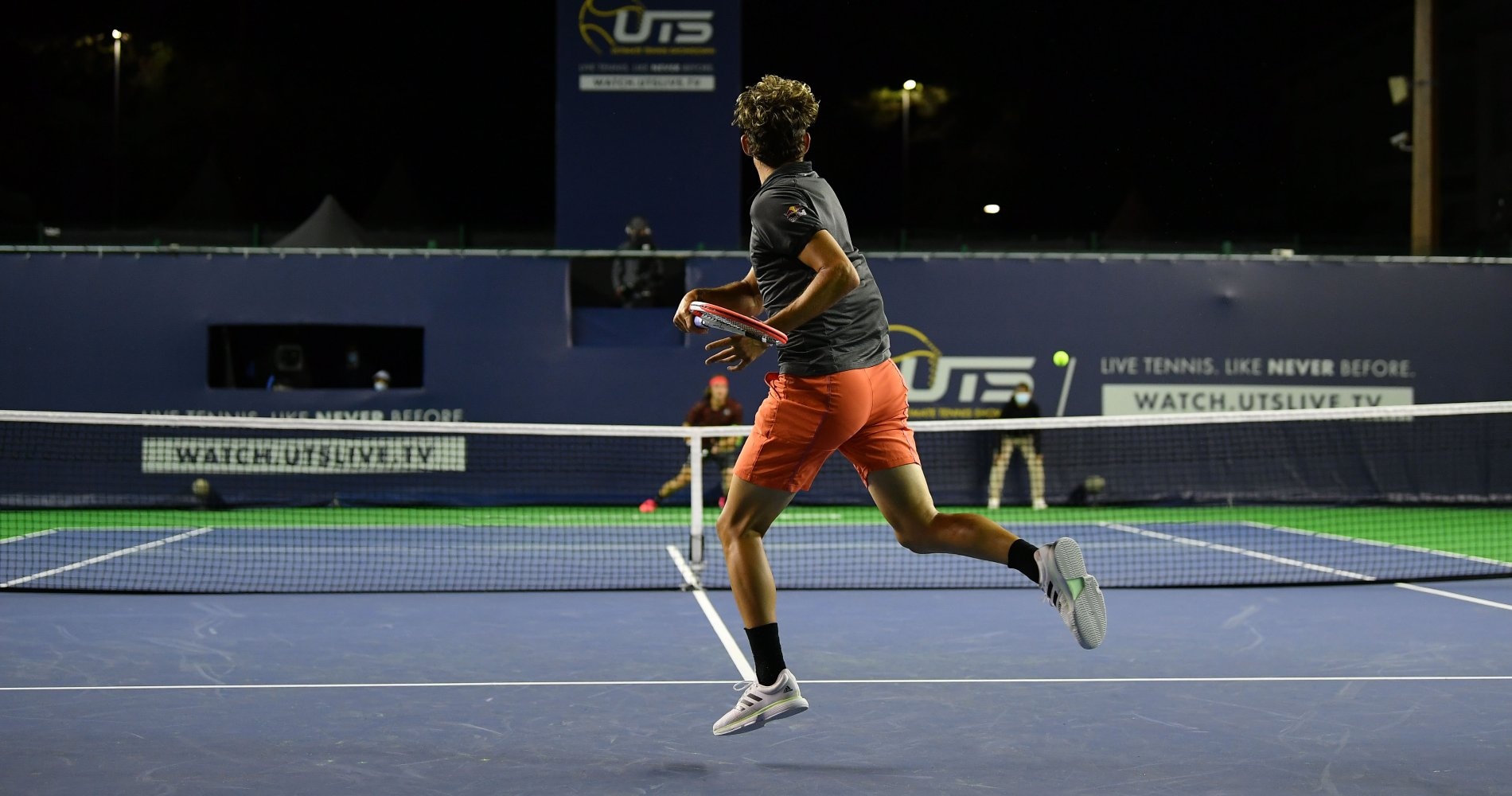Dustin Brown – 3 minutes to learn more about “The Artist”
Flamboyant, care-free and exuberant, with Dustin Brown, the only thing you need to know is, expect the unexpected.
At 35, Brown is one of the most unorthodox players in the game with the kind of explosive shot-making ability that makes him a favourite with fans around the world.
With The Artist, you never know know what you’re going to get, which makes him the trickiest of opponents.
Born in Celle to a German mother and Jamaican father, Brown has been one of the biggest drawcards on the Tour ever since he upset Rafael Nadal in the second round at Wimbledon in 2015.
With a huge serve and dazzling array of strokes, from bullet-like returns to the most unlikely of drop shots, Brown is capable of anything and he holds the rare honour of a 2-0 head to head record with Nadal. Though he lacks the consistency of many of the players at Ultimate Tennis Showdown, he has three main weapons and none of them will be looking forward to facing the man they call “Dreddy”.
Trick shots
From flying tweeners to behind the back passes and slam dunks, Brown’s got the lot and even if they are not working at first, he’s willing to keep trying them until they come off.
“I guess it’s natural – I was doing this when I was a kid and I was missing a lot. Some people say it’s showing off, but it’s just part of me and it’s fun to watch. When the balls don’t go in, everyone says what’s he doing? But the older I get, the more the balls are going in, so I’m happy about that.”

Volleys
Few players in the modern game go to the net as much as Brown but it fits his mindset, moving forward at every opportunity, testing his opponents to see if they can come up with the goods time and time again, even when the score gets tight.
“I’ve gone to the net from since I’m very young. I’ve always played tennis like that, I was taught to be aggressive, to try to go to the net. In juniors I was playing serve and volley, even on clay, so it’s so much more natural for me to go forward.”
Unpredictability
Brown gives his opponents no rhythm, no chance to get into a groove, looking to get them out of their comfort zone and then take advantage. If you start thinking you know what’s coming when you’re facing Brown, you’re in trouble.
As his coach, Mark Spitzlay, summed up so neatly:
“If he doesn’t know what he’s going to do next, how can the opponent know?”






